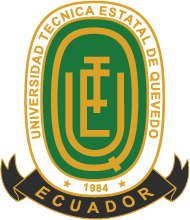Evaluation of the diversity of Scolitids (Coleoptera: Curculionidae) in the forest plantations of the central zone of the Ecuadorian littoral
DOI:
https://doi.org/10.18779/cyt.v10i2.204Palabras clave:
ESCOLÍTIDOS, DIVERSIDAD, BALSA, TECA, ECUADOR, MELINA, CAUCHOResumen
The species of Scolytinae subfamily have a worldwide distribution, and are found mainly in the Neo-tropic regions. They usually dominate the communities of wood borer insects. The aim of the present study was to determine the diversity among Scolytinae species associated with balsa, teak, rubber and gamhar plantations located in the humid tropical zone of the Ecuadorian littoral. In each plantation seven flight interception traps containing an ethanol / gel mixture were installed, with a collection frequency of 15 days for three months in the dry period. A total of 1437 specimens were collected, represented by Xyleborini, Cryphalini, Corthylini and Ipini tribes. In the four plantations, 18 species of Scolitids were collected, of which 16 were recorded in the balsa plantation, while in the other plantations 10 to 12 species were found. The most abundant Scolitids were Hypothenemus spp., Corthylus spp., Xyleborus affinis, Xyleborinus bicornatulus and Premnobium cavipennis. The Shannon-Wiener diversity index was higher in the balsa culture (H’= 2.37) and lower in Teak (H’= 1.57). The Jaccard similarity index was higher among the teak and rubber plantations (Cj = 0.9090) while the balsa plantation obtained less similarity with respect to the other three plantations. The greatest diversity of Scolitids was recorded in the balsa plantation, which is a native species, unlike the other forest species, which are exotic, indicating that the diversity would be influenced by the host tree and the location where they are found.
Descargas
Descargas
Publicado
Cómo citar
Número
Sección
Licencia

Esta obra está bajo una licencia internacional Creative Commons Atribución-NoComercial-CompartirIgual 4.0.
Licensing Agreement
This journal provides free access to its content through its website following the principle that making research available free of charge to the public supports a larger exchange of global knowledge.
Web content of the journal is distributed under a Attribution-NonCommercial-ShareAlike 4.0 International.
Authors may adopt other non-exclusive license agreements for the distribution of the version of the published work, provided that the initial publication in this journal is indicated. Authors are allowed and recommended to disseminate their work through the internet before and during the submission process, which can produce interesting exchanges and increase citations of the published work.











